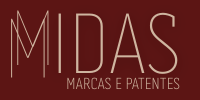Introduction
Expanding a brand globally can open up new business opportunities, but it also comes with risks. Without proper protection, competitors in other countries may copy, register, or misuse your brand name or logo, causing legal disputes and financial losses.
One of the most effective ways to secure international trademark rights is through the Madrid Protocol, a global system that allows businesses to apply for trademark protection in multiple countries with a single application.
In this article, we will explain what the Madrid Protocol is, how it works, and how businesses in Brazil can use it to protect their brand internationally.
1. What Is the Madrid Protocol?
The Madrid Protocol is an international treaty that simplifies trademark registration across multiple countries. Instead of filing separate applications in each country, businesses can submit one application and extend their trademark protection to over 130 member countries.
✅ Key Benefits of the Madrid Protocol:
- One application, multiple countries – File a single request for trademark protection in multiple jurisdictions.
- Cost-effective – Saves money by reducing the need for multiple national applications.
- Simplified management – Easy renewals and updates for all selected countries.
📌 Who Manages the Madrid Protocol?
The system is administered by WIPO (World Intellectual Property Organization), based in Geneva, Switzerland.
2. How Does the Madrid Protocol Work?
To use the Madrid Protocol, businesses must follow these three main steps:
Step 1: File a Trademark Application in Your Home Country
Before applying for international protection, businesses must have a registered or pending trademark in their home country.
📌 For Brazilian Businesses:
- You must first register your trademark with INPI (Instituto Nacional da Propriedade Industrial) in Brazil.
- This INPI registration serves as the “base application” for your international request.
Step 2: Submit an International Application Through INPI
Once your trademark is filed or registered in Brazil, you can apply for international protection via INPI, which will forward the request to WIPO.
📌 Key Details Required in the Application:
- The trademark name and logo (if applicable).
- The list of goods and services covered by the trademark.
- The countries where protection is requested.
📌 Fees:
- WIPO charges a base fee, plus additional fees depending on the number of countries selected.
Step 3: WIPO Reviews and Forwards the Application to Selected Countries
- WIPO examines the application and forwards it to the trademark offices of each country selected.
- Each national trademark office evaluates the request based on its local laws.
- If approved, the trademark is protected in those countries.
📌 Timeline: The entire process can take 12 to 18 months.
3. What Countries Are Covered by the Madrid Protocol?
Currently, over 130 countries participate in the Madrid Protocol, including:
🌎 Major Economies:
- United States
- European Union (EU)
- China
- Japan
- United Kingdom
- Canada
- Australia
📌 Important: Some countries, like Brazil, the U.S., and the EU, have different legal criteria for approving trademarks.
4. Advantages of Using the Madrid Protocol
🚀 Faster and Simpler Process – No need to file separate applications in each country.
💰 Lower Costs – Avoids expensive local legal fees.
📝 Easy Management – Renew, modify, or expand trademark protection through one system.
🌍 Global Expansion – Ensures brand protection in international markets.
5. Potential Disadvantages and Challenges
❌ Rejection in One Country Does Not Affect Others – Each country independently examines the trademark.
❌ Trademark Requirements Vary – Some countries have stricter rules for approval.
❌ Not All Countries Are Members – Key markets like Argentina and South Africa are not part of the Madrid Protocol.
6. How to Apply for International Trademark Protection from Brazil
Step-by-Step Guide for Brazilian Businesses
✅ Step 1: Register Your Trademark with INPI
- A Brazilian trademark registration or application is required.
✅ Step 2: Select Target Countries
- Choose the countries where your business operates or plans to expand.
✅ Step 3: Submit the International Application via INPI
- INPI forwards the request to WIPO for processing.
✅ Step 4: WIPO Sends the Application to Selected Countries
- Each country’s trademark office evaluates the request separately.
✅ Step 5: Monitor the Application Status
- Track the progress via WIPO’s Madrid Monitor system.
✅ Step 6: Maintain and Renew Your Trademark
- Trademarks must be renewed every 10 years to remain valid.
7. What If Someone Opposes My International Trademark?
If a foreign company challenges your trademark application, you can:
✅ Provide a legal defense through a local lawyer.
✅ Modify your trademark to meet local requirements.
✅ Negotiate a settlement if a similar brand already exists.
8. Alternative Ways to Protect a Brand Internationally
If a country is not part of the Madrid Protocol, you must register the trademark directly with that country’s national trademark office.
📌 Example:
If you want to protect your brand in Argentina (which is not a Madrid Protocol member), you must apply through Argentina’s National Institute of Industrial Property (INPI Argentina).
9. Common Mistakes to Avoid
❌ Applying for Too Many Countries Without Strategy – Focus on key markets where you plan to do business.
❌ Not Checking for Similar Trademarks First – Always search trademark databases before applying.
❌ Ignoring Renewal Deadlines – International trademarks must be renewed every 10 years.
Conclusion
The Madrid Protocol is a powerful tool for Brazilian businesses looking to expand and protect their brand internationally. By simplifying trademark applications across multiple countries, it helps businesses save time, reduce costs, and secure global brand protection.
If your brand has international potential, consider applying through the Madrid Protocol to ensure that your trademark is legally protected worldwide.

